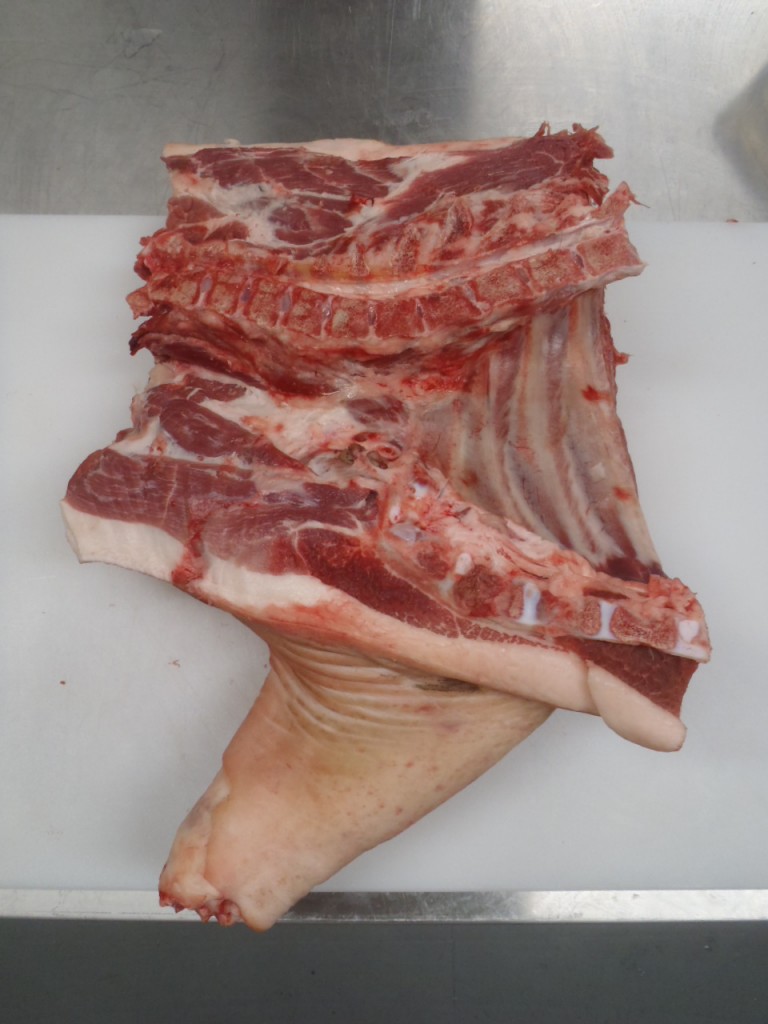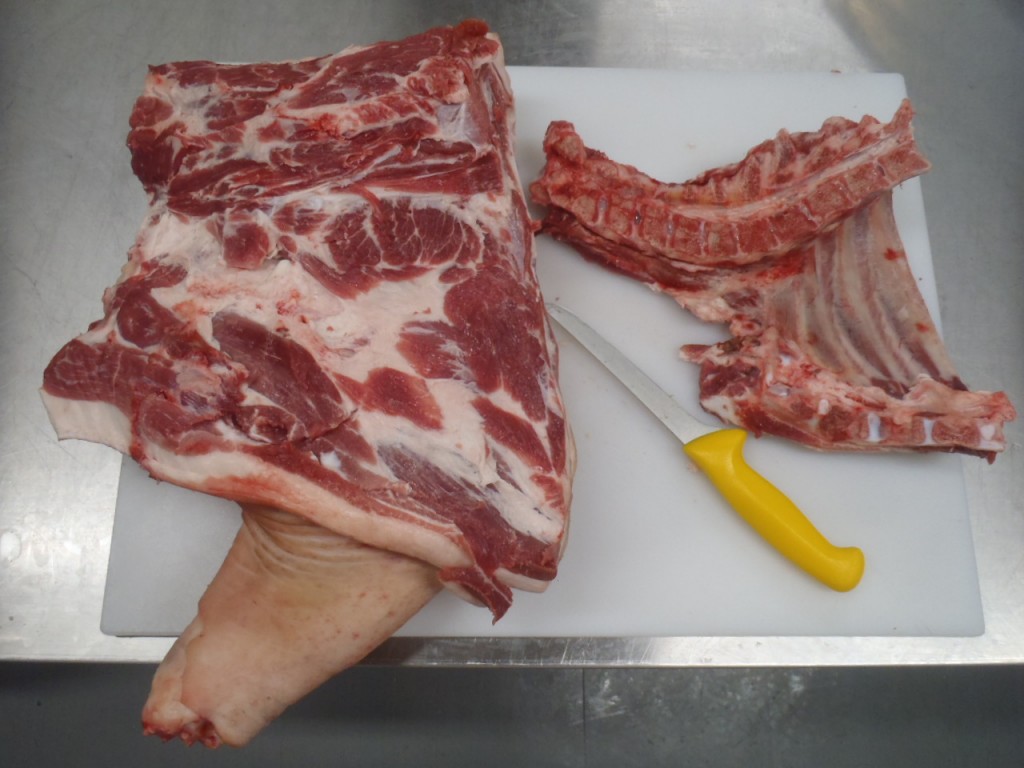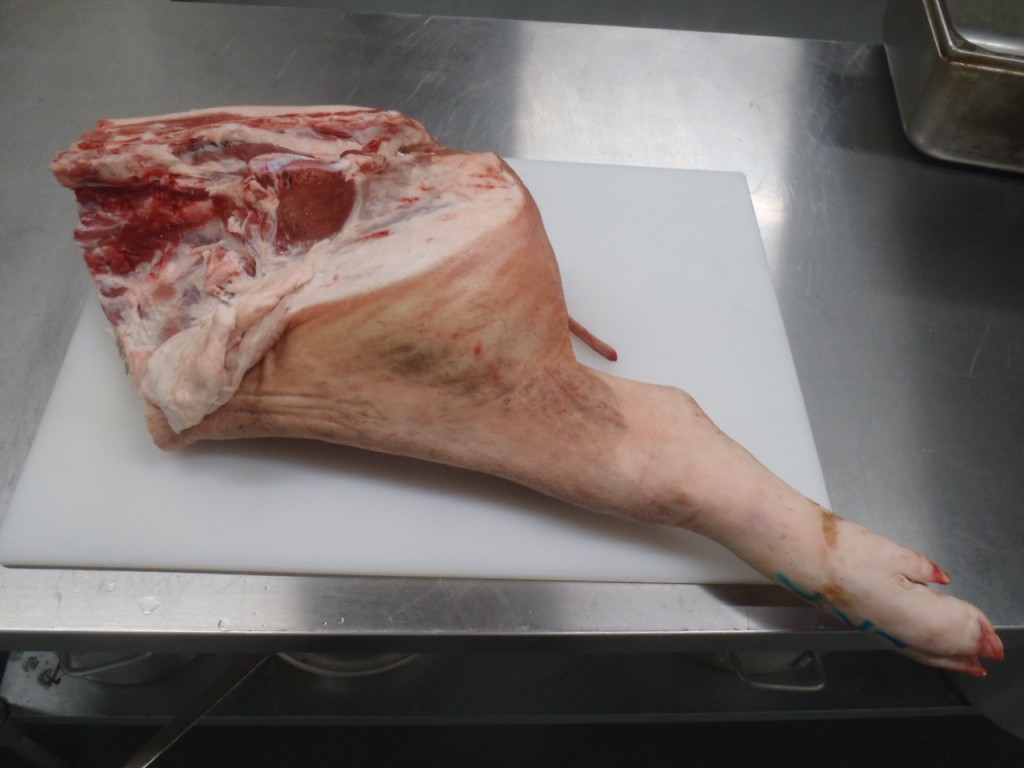I first learned the pork primals in culinary school, and for years I considered that information dogmatic. Then in an Austrian grocery store I saw this:
It’s called Carinthian farmer bacon (Kaerntner Bauernspeck). Carinthia is a province in southern Austria, known for its rustic food. It took me a few moments to realize where exactly this cut would have come from on a pig. It is in fact a pork loin, with the side or belly still attached, cured as one large piece, cold-smoked, and sold in thick slabs.
Novel cuts like this are just as easy to butcher as the classics. Following is a quick tutorial, with photos, to prove the point.
Here is a side … Continue reading.









